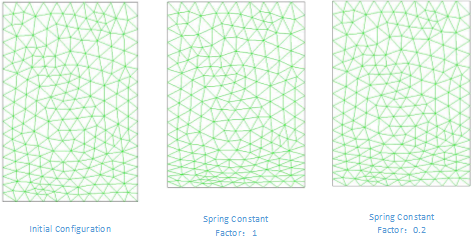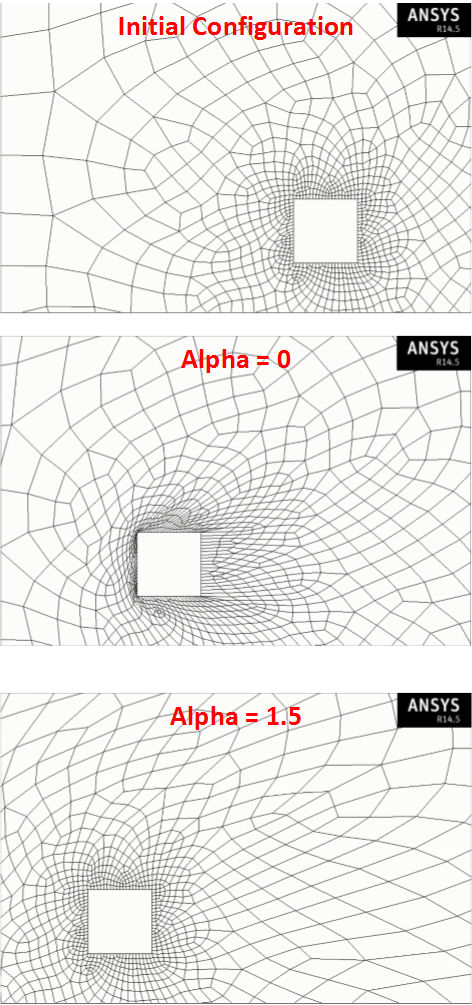博文
Fluent动网格技术之网格光顺(Smoothing)
||
网格光顺法只适用于小位移情况,大位移时需和网格重划分技术结合使用。
初始分析步适用于二维三角形单元或四边形单元,三维只适用于四面体单元。
网格光顺定义的边界作用像弹簧或海绵一般,只能发生小变形,网格不会增加或减少。
1) Spring-Based Smoothing:
Spring Constant Factor 大小在0-1之间,默认值为1;
较小的值导致一个比较“软”的网格,网格变形影响范围大;
较大的值导致一个比较“硬”的网格,网格变形影响范围小,仅限边界附近的网格发生变形。
增加迭代次数设置(numer of iterations)可能得到更好、更光滑的网格,也花费更多时间。

2)Diffusion-Based Smoothing
通常比Spring-Based Smoothing更耗时,得到的网格质量更好;
Diffusion parameter(alpha)扩散系数默认设置为0;
alpha=0, 边界移动均匀扩散到网格内部;
一个大一些的alpha值可以保护动边界附近的网格;
alpha=1-1.5,有利于使用“远场”网格吸收边界运动导致的变形。

Fluent Tutorial:
Smoothing can handle only small displacements. So for larger displacements it has to be associated
with the remeshing method. Also it can only be applied to tri and tet elements as a first step and then
extended to quad elements. In smoothing method nodes are connected together as a network. So iwith
smoothing method the edges linking the nodes react like a sponge/spring. So during this there is no
addition or deletion of cells. This is one of the reason why smoothing is applicable to only small displacements.
https://blog.sciencenet.cn/blog-774545-1042747.html
下一篇:Fluent 动网格技术之网格重划分(Remeshing)